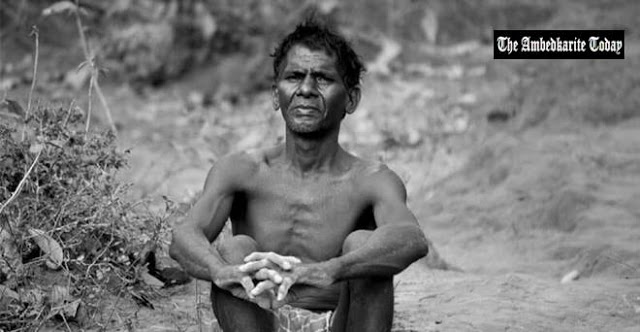According To ISDN The Indian Bonded Labour System Abolition Act of 1976 prohibits any service arising out of debt, including forced labour and bonded labour. The legal definition of ‘the bonded labour system’ recognizes force as including not only physical or legal elements, but also including deprivation of alternative choices, economic circumstances, and a derived compulsion to choose a particular course of action, such as providing underpaid or unpaid labour.
Caste-based Slavery
In spite of the encompassing and seemingly progressive legislative framework, the use and abuse of Dalit bonded labourers in India remains endemic within a range of occupations and branches, both rural and urban, such as agriculture, forestry, fishing, domestic work, and cleaning. A report by Anti-Slavery International in 2008, revealed that dalit bonded labourers are employed to carry out the most physically straining and menial types of work in industries such as silk farms, rice mills, salt pans, fisheries, quarries and mines, tea and spice farming, brick-kilns, textile and domestic work(2).Lack of implementation of the legislative frameworks, failure of the authorities to observe the laws, and impunity of perpetrators are the most common obstacles to eliminating forced and bonded labour in India.
Forced labour in agriculture
Agriculture accounts for approximately 64 percent of the entire population’s workforce and employs far more bonded labourers than all other industries and services in India together, according to a Human Rights Watch report. Conditions for bonded agricultural labourers are among the harshest. The work is grueling, days are extremely long, and payment is nominal and may consist of two sole meals a day with a yearly set of clothing.
Agricultural labour is especially linked to caste as the caste structures are deeply entrenched in rural areas. Realities reveal that landlords are high caste, small landowners are of lower castes, and the landless and bonded laborers are almost exclusively dalits. According to Human Rights Watch, caste hierarchies are not only confined to land, but also permeate every aspect of village life(3).
Gender and bonded labour
Patriarchal systems confine women to certain types of occupations, such as domestic work, silk farming, carpet making and weaving. Young girls are commonly recruited to work in spinning mills in India in return for the cost of their marriage or a dowry payment. The parents often wait several years before receiving the money, which is usually less than initially agreed upon.
The dalit women are at the absolute bottom of the social hierarchy. They face discrimination as Dalits, as poor and as women, making them the most vulnerable group. A study by the ILO reveals that women are restricted in decision making concerning household resources and control over money. Furthermore, the respondent women suffer food deprivation and malnutrition to a greater extent than the men. Having so-called feminized duties doesn’t relieve the women of other chores. Being women simply adds to their workload. The women express that they find caste discrimination from their landlords to be the most distressing(4).
Read more about Dalit women here
Child bonded labour
Children are particularly vulnerable to forced and bonded labour. Even when in the care of guardians, they are pursued as targets for bonded labour. Various reports and studies have identified bonded child labour in a number of occupations including agriculture, brick kilns, stone quarries, carpet weaving, bidi (cigarette) rolling, rearing of silk cocoons, production of silk sarees, production of silver jewellery, gem cutting, diamond cutting, manufacture of leather products, in circuses, fisheries, shops and tailoring establishments, and domestic work(5).
A Human Rights Watch report from 2003 estimates that 350,000 children work in bonded labour in India’s child silk thread and weaving industry in the Karnataka and Varanasi districts alone(6). Reflecting national tendencies, the majority of the children are Dalit, SC/ST or Muslims. These children report of working nearly 12 hours a day. As a result of poor and hazardous working conditions the children suffer health problems and diseases as well as verbal and physical abuse from their employers. They report that they never receive the agreed wages, instead often getting just a small portion of the amount agreed upon.
Caste-based forms of bonded labour
Dalits are particularly vulnerable to bonded labour, because of their socio-economic status, but bonded labour is also conjoined with caste in the form of caste-based occupations.
Two well-known forms of caste-based and bonded occupations in India are manual scavenging and the systems of forced prostitution.
References
- The National Campaign on Dalit Human Rights (NCDHR)
- The National Confederation of Dalit Organisations (NACDOR)
- The National Federation of Dalit Women (India) (no website available)
- Navsarjan Trust
- People’s Watch
- Jansahas
- Navsarjan (Dalit human rights organisation in Gujarat)
- National Dalit Watch (NCDHR) Blog
- Safai Karmachari Andolan (a movement to eradicate manual scavenging)
- Maila Mukti Yatra (marches against manual scavenging)
- Jan Sahas Social Development Society
- Indian Institute for Dalit Studies (IIDS)
- National Confederation of Human Rights Organizations (NCHRO)
- Dalits Media Watch
- Working Group on Human Rights in India and the UN (WGHR)
- Deccan Development Society (DDS)
- Action Aid India
- Dalit.org – Lifting the veil on the Indian Caste System
- Round Table India – for an informed Ambedkar age

